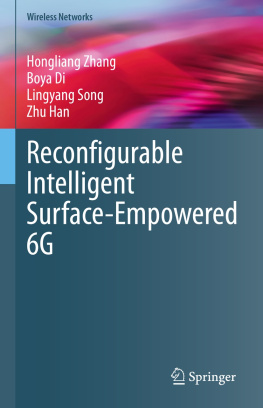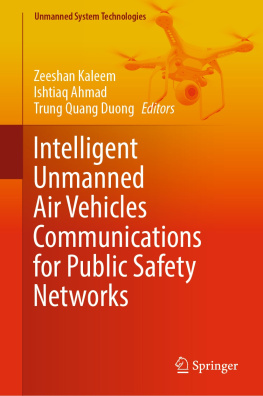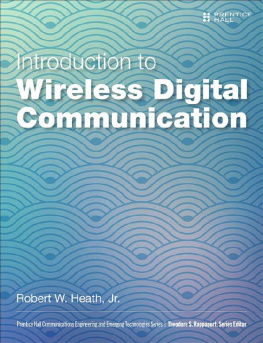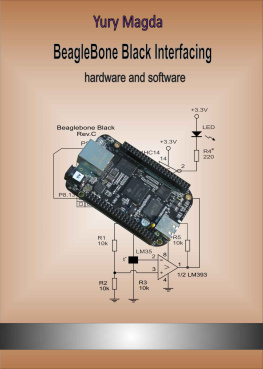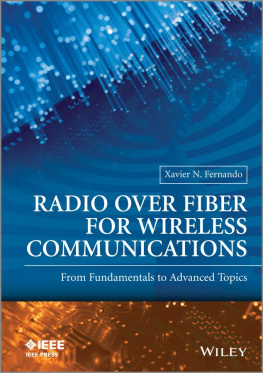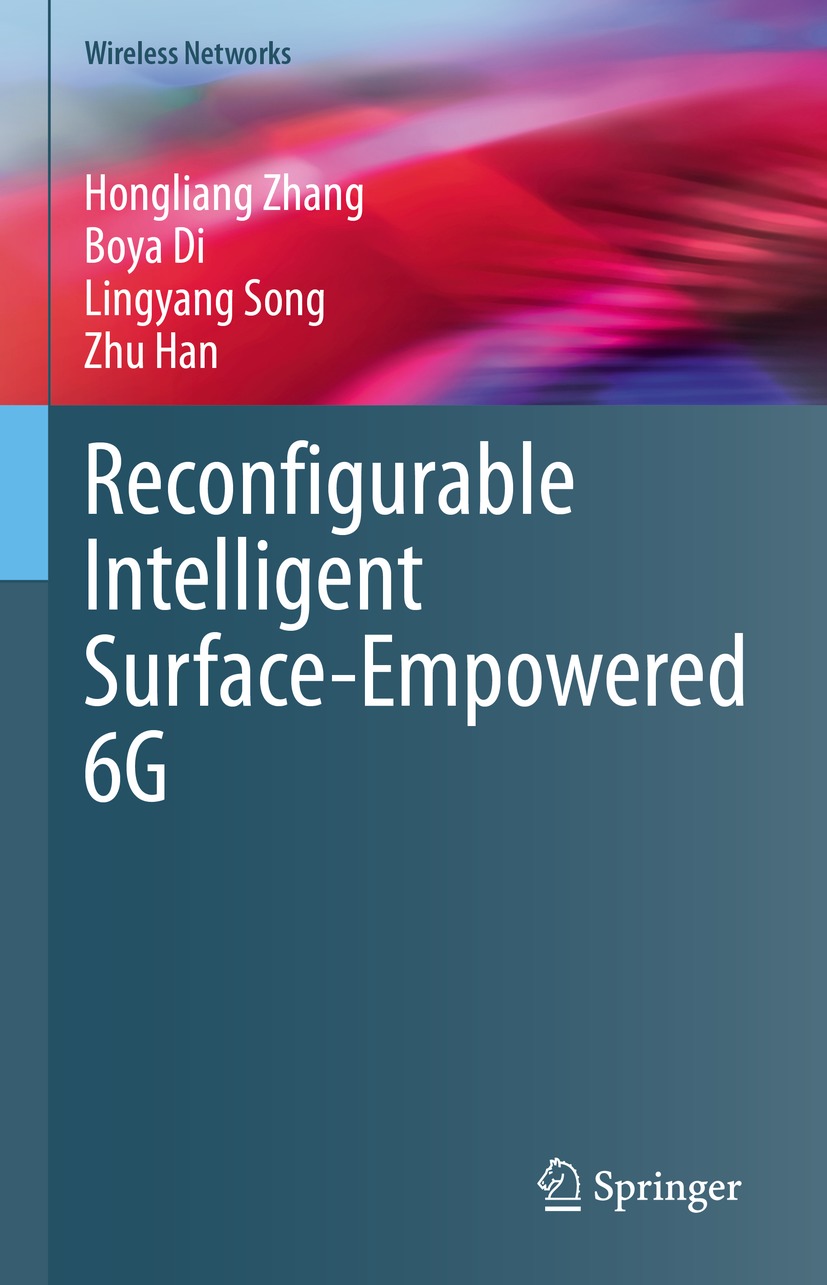Wireless Networks
Series Editor
Xuemin Sherman Shen
University of Waterloo, Waterloo, ON, Canada
The purpose of Springer's Wireless Networks book series is to establish the state of the art and set the course for future research and development in wireless communication networks. The scope of this series includes not only all aspects of wireless networks (including cellular networks, WiFi, sensor networks, and vehicular networks), but related areas such as cloud computing and big data. The series serves as a central source of references for wireless networks research and development. It aims to publish thorough and cohesive overviews on specific topics in wireless networks, as well as works that are larger in scope than survey articles and that contain more detailed background information. The series also provides coverage of advanced and timely topics worthy of monographs, contributed volumes, textbooks and handbooks.
** Indexing: Wireless Networks is indexed in EBSCO databases and DPLB **
More information about this series at http://www.springer.com/series/14180
Hongliang Zhang , Boya Di , Lingyang Song and Zhu Han
Reconfigurable Intelligent Surface-Empowered 6G
1st ed. 2021

Logo of the publisher
Hongliang Zhang
Princeton University, Princeton, NJ, USA
Boya Di
Imperial College London, London, UK
Lingyang Song
Peking University, Beijing, China
Zhu Han
University of Houston, Houston, TX, USA
ISSN 2366-1186 e-ISSN 2366-1445
Wireless Networks
ISBN 978-3-030-73498-5 e-ISBN 978-3-030-73499-2
https://doi.org/10.1007/978-3-030-73499-2
The Editor(s) (if applicable) and The Author(s), under exclusive license to Springer Nature Switzerland AG 2021
This work is subject to copyright. All rights are solely and exclusively licensed by the Publisher, whether the whole or part of the material is concerned, specifically the rights of translation, reprinting, reuse of illustrations, recitation, broadcasting, reproduction on microfilms or in any other physical way, and transmission or information storage and retrieval, electronic adaptation, computer software, or by similar or dissimilar methodology now known or hereafter developed.
The use of general descriptive names, registered names, trademarks, service marks, etc. in this publication does not imply, even in the absence of a specific statement, that such names are exempt from the relevant protective laws and regulations and therefore free for general use.
The publisher, the authors and the editors are safe to assume that the advice and information in this book are believed to be true and accurate at the date of publication. Neither the publisher nor the authors or the editors give a warranty, expressed or implied, with respect to the material contained herein or for any errors or omissions that may have been made. The publisher remains neutral with regard to jurisdictional claims in published maps and institutional affiliations.
This Springer imprint is published by the registered company Springer Nature Switzerland AG
The registered company address is: Gewerbestrasse 11, 6330 Cham, Switzerland
Preface
Launching from fifth-generation communications, which provide a single platform enabling a variety of data services, evolution towards sixth-generation (6G) has been kicked off, envisioning future wireless networks to become distributed intelligent communications, sensing, and localization systems. Though such a demand has gained support from existing techniques such as massive MIMO and small cells, they heavily depend on the quality of the uncontrollable wireless environments. Differently, reconfigurable intelligent surface (RIS) as a new type of ultra-thin meta material inlaid with multiple sub-wavelength scatters can create favorable propagation conditions by controlling the phase shifts of the reflected waves at the surface such that the received signals are directly reflected towards the receivers without any extra cost of power sources or hardware. It provides a revolutionarily new approach to actively improve the link quality and coverage, which sheds light into the future 6G. Due to the coupling between radio propagation and discrete phase shifts of RIS, existing protocols and design methodologies cannot be directly applied any more. Therefore, it is essential to develop new communication and signal processing techniques and to explore various RIS-based applications such as intelligent sensing and localization.
In this book, novel RIS-based smart radio techniques are discussed, targeting at achieving high-quality channel links in cellular communications via design and optimization of RIS construction. Unlike traditional antenna arrays, three unique characteristics of RIS will be revealed. First, the built-in programmable configuration of RIS enables analog beamforming inherently without extra hardware or signal processing. Second, the incident signals can be controlled to partly reflect and partly transmit through the RIS simultaneously, adding more flexibility to signal transmission. Third, RIS has no digital processing capability to actively send signals nor any radio frequency (RF) components. As such, it is necessary to develop novel channel estimation and communication protocols, design joint digital and RIS-based analog beamforming schemes, and perform interference control via mixed reflection and transmission.
Benefited from its ability to actively shape the propagation environment, the RIS technique is further investigated to achieve two types of wireless applications, that is, RF sensing and localization.
In RF sensing, the influence of the sensing objectives on the wireless signal propagation can be potentially recognized by the receivers, which is then utilized to identify the objectives. Unlike traditional sensing techniques, RIS-aided sensing can actively customize the wireless channels and generate a favorable massive number of independent paths interacting with the sensing objectives. It is desirable to design RIS-based image recovery algorithms, optimize RIS configurations, and study efficient tracking methods.
For the second application, that is, RIS aided localization, RIS is deployed between the access point (AP) and users such that the AP can analyze the reflected signals from users via different RIS configurations to obtain the accurate locations of users. However, this is a challenging task due to the dynamic user topology as well as the mutual influence between multiple users and the RIS. Therefore, the operations of RIS, AP, and multiple users need to be carefully coordinated. A new RIS-based localization protocol for device cooperation and an RIS configuration optimization algorithm are also required. Implementations with respect to different real-world scenarios will be delivered to illustrate the proposed approaches separately in the above applications.
The aim of this book is to educate control and signal processing engineers, computer and information scientists, applied mathematicians and statisticians, as well as systems engineers to carve out the role that analytical and experimental engineering has to play in RIS research and development. This book will emphasize on RIS technologies and applications for future communications.

